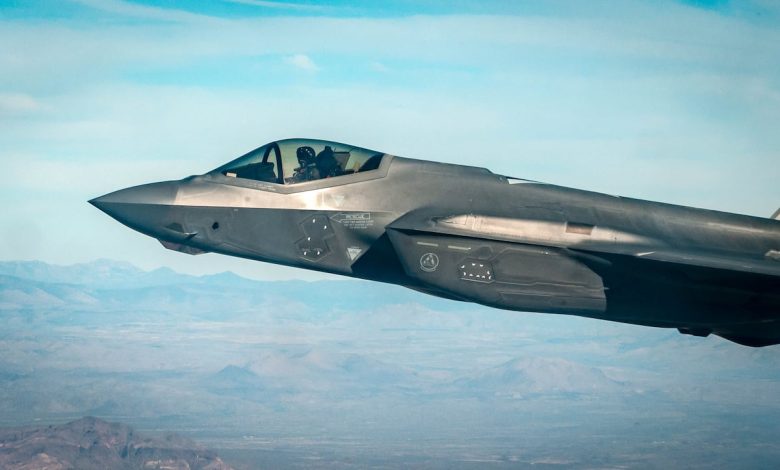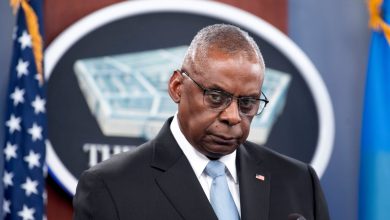Defense bill would cut F-35 purchases in 2025, delay deliveries

Congress is set to cut the number of Lockheed Martin-made F-35s the military wants to buy in 2025 from 68 to 58 under this year’s defense authorization bill.
The proposed National Defense Authorization Act for fiscal 2025, which lawmakers released Saturday, would also limit to 48 how many newly purchased fighters the military will take delivery of until the Pentagon shows how it plans to fix several problems with the Joint Strike Fighter program.
The Air Force would be able to buy and accept delivery of 30 F-35As under the NDAA. The Marine Corps would get nine F-35Bs, which are the short takeoff and vertical landing variant of the jet, and the Navy and Marine Corps would get nine F-35Cs that can land on an aircraft carrier. The Pentagon’s original budget proposal for 2025, released in March, asked for 42 F-35As, 13 F-35Bs and 13 F-35Cs.
Lawmakers have grown increasingly impatient with the F-35 program, as problems with its Technology Refresh 3 upgrades led to a delivery halt in July 2023 that stretched on for about a year, as newly built jets piled up at Lockheed’s factory in Fort Worth, Texas.
The newest F-35s are now being delivered with an interim version of the TR-3 software and can fly combat training missions, but will not be able to fly in combat until 2025. The military is now withholding about $5 million per jet in payments to Lockheed until the new F-35s are combat-capable.
A senior staff member for the House Armed Services Committee’s Republican majority told reporters in May that members have “grown frustrated” with the program for the last few years, and cited the delivery halt as a particular point of displeasure and cause for the delivery reduction. He also said the program needed to fix software and radar problems with the F-35.
A Democratic staffer also told reporters in May that the F-35 program needs to sort out problems with the TR-3 upgrades — which include improved displays, computer memory and processing power — so work on a more expansive set of upgrades known as Block 4 can follow. Block 4 upgrades would include the ability to carry more weapons and better electronic warfare capabilities.
The final 10 deliveries slated for 2025 would only be allowed when the defense secretary tells congressional defense committees how it plans to improve research, development, testing, evaluation, production and sustainment problems across multiple areas in the F-35 program, the NDAA said. And the defense secretary would be required to send Congress annual updates for five years, starting next April, on how the plans to fix the F-35′s problems are going.
Cutting the purchase of 10 F-35s entirely would save about $1 billion, the Republican staffer said in May, which could be reinvested in the program and ensure new F-35s work correctly as soon as they are delivered.
The Senate’s original NDAA would have left the number of F-35 purchases unchanged from the Pentagon’s request, at 68. The House’s proposed defense appropriations bill would take a different approach from the authorization bill and add eight more F-35s to the Pentagon’s shopping list.
Rep. Rob Wittman, R-Va., the chairman of the House Armed Services subcommittee on tactical air and land forces, told Defense News on Saturday that the new F-35s are on their way to getting combat capabilities — but that “fencing off” these 20 jets will be necessary to help get the program back on track.
“I’ll give them credit, they have made progress,” Wittman said at the Reagan National Defense Forum in Simi Valley, California. “Now I will say, there is more that needs to be done, so I want to make sure they maintain the focus there. But I think they have turned the corner in how they have made a meaningful effort to address the [F-35] challenges … that were just mind-boggling.”
Wittman also said Lockheed Martin’s October decision to put a software engineering specialist, Chauncey McIntosh, in charge of the company’s F-35 operations demonstrates it knows it needs to do better on the jets’ software.
The bill also contains an amendment Wittman proposed earlier this year, which would up the number of developmental test F-35s purchased from six to at least nine.
Congress’ joint explanatory statement for the bill noted Lockheed Martin’s agreement to invest $350 million of its own money to improve how the F-35 program operates, particularly the development, testing and fielding of new hardware and software capabilities. The statement also encouraged the program’s major subcontractors to consider similarly investing in their F-35 efforts.
Defense News’ Noah Robertson contributed to this report.
Stephen Losey is the air warfare reporter for Defense News. He previously covered leadership and personnel issues at Air Force Times, and the Pentagon, special operations and air warfare at Military.com. He has traveled to the Middle East to cover U.S. Air Force operations.
Read the full article here






